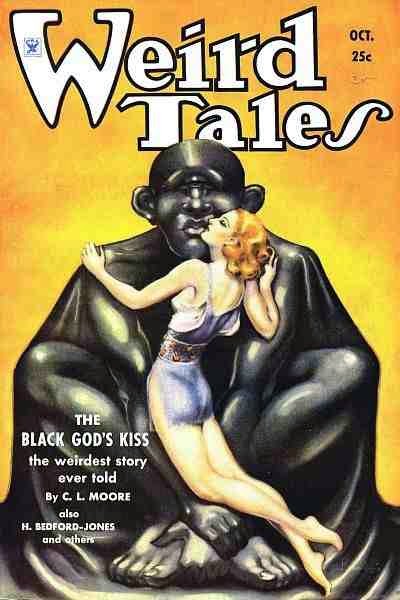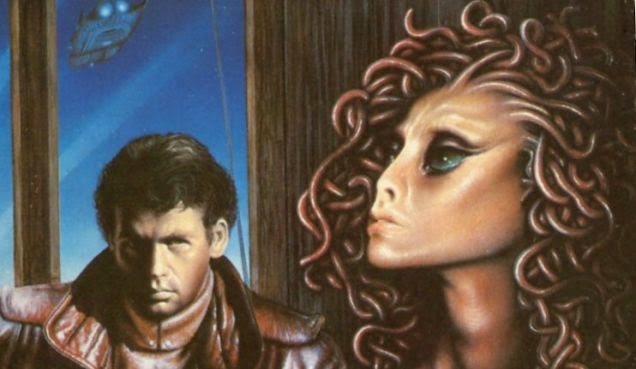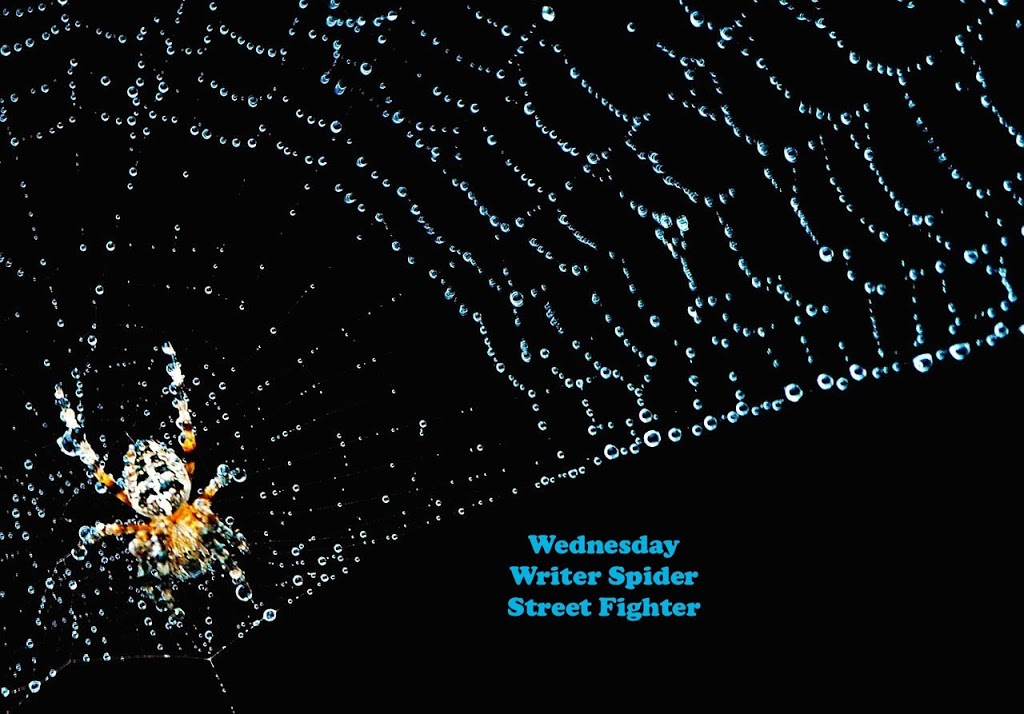blog post #52 by Science Fiction Author Clara Bush
Cover of Weird Tales, October 1934. Painting by Margaret Brundage
If a time-traveling headline had been written in 1933 to summarize C.L. Moore’s influence on science fiction, it might have read:
Twenty-two-Year-Old Impacts Science Fiction Forever
Her first published story, Shambleau, left the bleak, mechanical, and apathetic elements of the genre behind and paved the way for science fiction writers to create worlds and characters with warmth, personality, color, sexual drive, and love.
Using the pen name C.L. Moore, many readers didn’t know if the author was a male or female. However, forty years after being published, Catherine Lucille Moore (1911-1987) was honored at a World Science Fiction Convention banquet. The speech to accompany the presentation was never made because—upon hearing the title Shambleau—the 2,000 people in attendance rose to their feet and began shouting and clapping.
Many of that audience had never read the story. But everyone knew about it. And everyone knew that Catherine Moore was one of the finest writers of all time in the field of science fiction.
It is probably impossible to explain to modern readers how great an impact that first C.L. Moore story had. But if you could go back to the old science fiction magazines of the time and read a few issues, and then turn to “Shambleau” for the first time, you might begin to understand. The influences of the that story were and are tremendous.
—Lester Del Rey (1915-1993)
American science fiction author and editor at Del Rey books.
Backstory
As a child, Moore was chronically ill and spend her days at home reading greek mythology, the fourteen books known as the Oz books by L. Frank Baum, and Edgar Rice Burroughs, creator of the heroes Tarzan and John Carter.
She attended Indiana University for a year and a half until the Great Depression of the 1930s caused her to leave in search of employment. While at the university, she wrote for the student-run newspaper. The 1931 March issue of The Vagabond said of Moore, she is…”perhaps, the most promising prose writer who has been at Indiana in some time.”
She was employed as a secretary in an Indianapolis bank when Shambleau was published in Weird Tales. Though male authors dominated the science fiction scene during her time, Moore used the pen name, C.L. Moore, not because of the male dominance, but to keep her writing identity secret from her employer.
Weird Tales editor, Farnsworth Wright, is reported to have closed down the offices of the magazine the day he read Moore’s story in celebration of its break from traditional science fiction.
A Mating of Minds
A promising young writer, Henry Kuttner, became a fan of Moore’s and contacted her. At the time, he didn’t realize she was a woman. They were married in 1940 and began a merger, not only of two individuals, but of their writing abilities as well.
Kuttner and Moore were an unusual mating of talents. Her fiction was noted for its sensitivity and emotional coloration. His was essentially intellectual in its creation, based upon a firm understanding of plot structure and, initially, often more clever than moving in its developments. Somehow, the couple managed to merge their talents, so that a story by either one would display both an intellectual base and a richly colored background. —Lester Del Rey (1975)
The pair wrote under various pseudonyms—C. H. Liddell, Lewis Padgett and Lawrence O’Donnell—which they are said to have shared or exchanged. It is reported that where one author left off the other could pick up and continue, to the point, that some of couple’s collaborative works are a puzzle as to true authorship.
It has been said that few stories during their marriage can, with any certainty, be attributed to Catherine Moore.
In 1958, Kuttner died of a heart attack. Moore never returned to writing science fiction but chose to write scripts for television instead. Maverick and 77 Sunset Strip are among the more noteworthy for which she wrote.
Just Me Thinking
In my opinion, Moore did what some women do once they find their soul mate. They love so profoundly they lose their identity to the person of their passion.
Still her impact on science fiction, and her brilliance at showing a female’s ability to create the genre with extraordinary results, are legendary. Moore influenced the writers of her time who in turn influenced our modern authors. She etched her style of science fiction into the genre forever.
Living Life As A Writer
Moore’s first published story, Shambleau, was never rejected but snatched up by Weird Tales for $100. A “fabulous amount” for then, she said.
Actually, I was far too unsure of myself to have hammered on the door of every publisher in New York if my first opus had been so unkindly treated. I’d simply given up and turned to some other form of activity, and this book would not be in your hand now. (I’m glad it is, too.)
— C.L. Moore, 1975
Golden Oreos
I sat at the typewriter and heard distant bells ringing somewhere on the backstairs of my mind. The situation was wide open, and with no conscious mental processes whatever I surrendered myself to it and the typewriter. (This is among life’s most luxurious moments—giving the story its head and just keep your fingers moving. They know where they’re going. )
— C.L. Moore, 1975
Nothing I have ever written was given the slightest deliberation. It was there in the typewriter and it came out, a total bypassing of the brain.
— C.L. Moore, 1980
interview with Jean W. Ross
Moore On Love
It was not her body that he loved…No, it was love, truly and completely, despite the shape she wore, despite the nameless sex that was hers. Love for herself—the essential self, however deeply buried beneath whatever terrible guise. And though her very substance was alien to him, and though no creature in all her ancestry had ever known love before, she loved him. Nothing else mattered.
And the thought came to him that love was like an infectious germ, spreading pain wherever it rooted itself. Had he brought it to her—infected her, too, with the hopeless passion he knew?
— C.L. Moore, 1934 from
The Bright Illusion
Sources:
Forward by Lester Del Rey in The Best Of C.L. Moore and Afterward by C.L. Moore.
***
The Science Fiction Reality blog is a little science, a little fiction, a little about writing, a little real, and a lot of weird.
Latest posts by Clara Bush (see all)
- Urban Legend in the Making - April 22, 2024
- Coghlan’s Traveling Coffin Urban Legend - April 4, 2024
- Richmond Vampire Urban Legend - March 7, 2024







